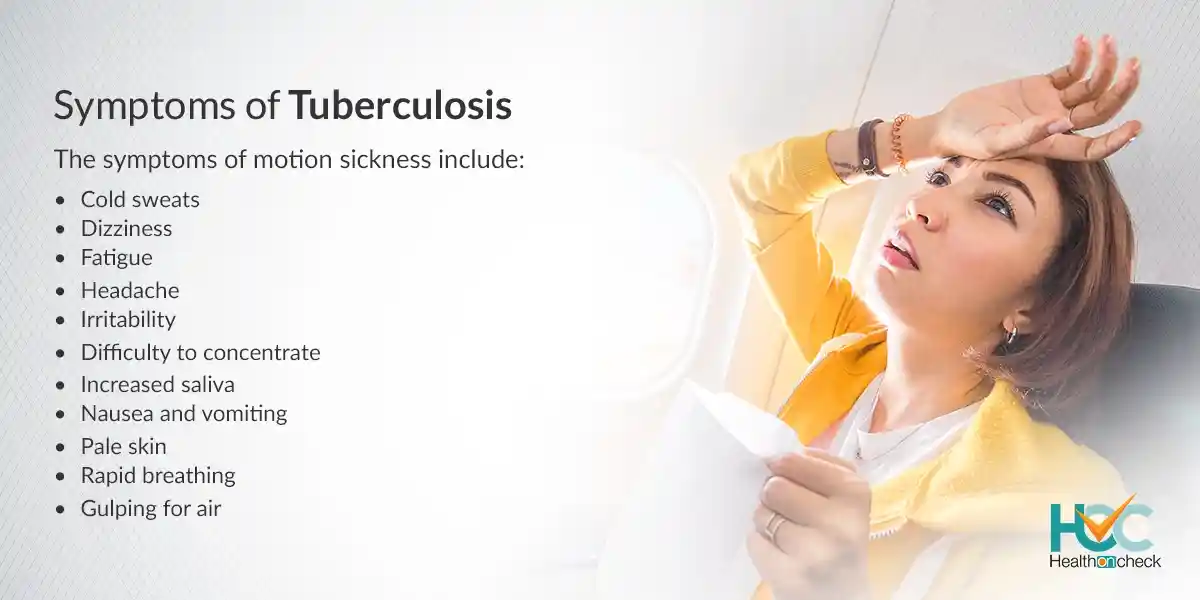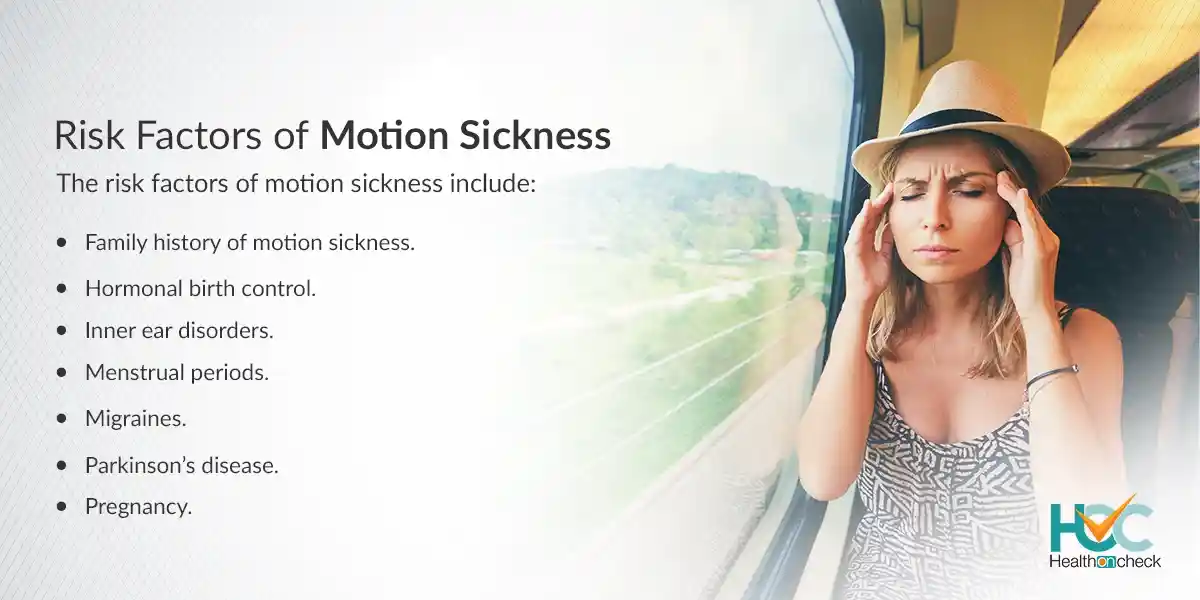What is Motion Sickness?

Motion sickness happens when your brain is not able to make sense of information sent from your body, eyes, and ears. and body. The abundance of motion in a car, aeroplane, boat, or even an amusement park ride might make you feel clammy, queasy, or sick to your stomach and it can make some people vomit. Being carsick, seasick, or airsick is motion sickness. Motion sickness can cause cold sweats, nausea, and vomiting. Women and children have an increased risk of developing motion sickness, but anyone can be affected by it. You can take steps while traveling to decrease your risk of getting motion sickness by taking medications such as the scopolamine patch which can prevent nausea.
What are the Types of Motion Sickness?
There are two types of motion sickness. The first and most common type happens when the eyes are not able to register motion but the vestibular/proprioceptive systems can. This type of motion sickness can happen on land ( e.g. automobiles, trains, and theme park rides); on the sea as seasickness (e.g. boats, ships), or in the air as airsickness (gliders, hovercraft, helicopters, planes); and in space as space sickness (e.g., space Shuttle).In these instances, the eyes can’t register the various movements of the car, leaving the patient bereft of the input required to avert a sensory conflict.
The second type of motion sickness is sometimes called “reverse motion sickness,” as it is the opposite of the traditional type. Here, the eyes register motion, but the vestibular/proprioceptive systems do not agree with the visual input. The sources of confusing “optokinetic” visual input include using microfiche/microfilm machines; attending wide-screen movie theatres; watching movies with jerky and unpredictable camera movements; playing video games; trying to read a moving map navigation system while driving; and using driving simulators, fixed-base flight simulators, and head-mounted and fixed-base virtual reality equipment. In all of these instances, there is no body motion done as the eyes see it. People might try to compensate for the illusion of movement by unconsciously moving their bodies in a postural swaying motion in the direction of the given movement.
What are the Symptoms of Motion Sickness?

The symptoms of motion sickness include:
- Cold sweats.
- Dizziness.
- Fatigue.
- Headache.
- Irritability.
- Difficulty to concentrate.
- Increased saliva
- Nausea and vomiting.
- Pale skin.
- Rapid breathing
- Gulping for air.
What are the Causes of Motion Sickness?
The motion-sensing parts of your body i.e. your eyes, inner ears, muscles, and joints send signals to your brain. When these parts start sending conflicting information, your brain gets confused whether you’re moving or stationary and because of this, your brain’s confused reaction makes you feel sick and causes motion sickness.
What are the Risk Factors of Motion Sickness?

The risk factors of motion sickness include:
- Family history of motion sickness.
- Hormonal birth control.
- Inner ear disorders.
- Menstrual periods.
- Migraines.
- Parkinson’s disease.
- Pregnancy.
What are the Complications of Motion Sickness?
Motion sickness usually does not cause serious problems. In rare instances, some people start throwing up continuously which can cause dehydration and low blood pressure (hypotension).
How Motion Sickness Is Diagnosed?
Your doctor will ask you to describe your symptoms and the factors why are you experiencing these symptoms. Your doctor might also perform a physical exam and check your eyes and ears to diagnose motion sickness.
What are the Treatment Options Available for Motion Sickness?
Motion sickness usually gets well of its own in some time.
Treatment options for motion sickness include:
Antihistamines: Antihistamines are usually given to treat allergies and they can also avert motion sickness and ease symptoms. Only antihistamines that result in drowsiness are effective. Non Drowsy formulas are not of any help.
Patches: Scopolamine skin patches or oral pills are helpful to prevent vomiting and nausea. the patch is stuck behind your ear for at least 4 hours before travelling and it can prevent motion sickness. The patch is stuck for three days and after that the patch is removed and a new one is applied. It can cause dry mouth and is only given to adults.
Living with Motion Sickness
Everyone gets motion sickness once in a while. The queasiness and nausea might make you vomit and you can’t escape the movement that’s making you sick, specifically if you are travelling. If you’re prone to motion sickness, you should discuss with your doctor about ways to prevent getting sick and what to do if you get motion sickness.
Whom to Consult
Motion sickness is a common condition and there are no serious complications of it but it might make you dehydrated because of excessive vomiting. In case you feel weak because of dehydration, you should seek medical help. Also if you experience symptoms of motion sickness, then contact your doctor who will give you medications to ease your symptoms.




